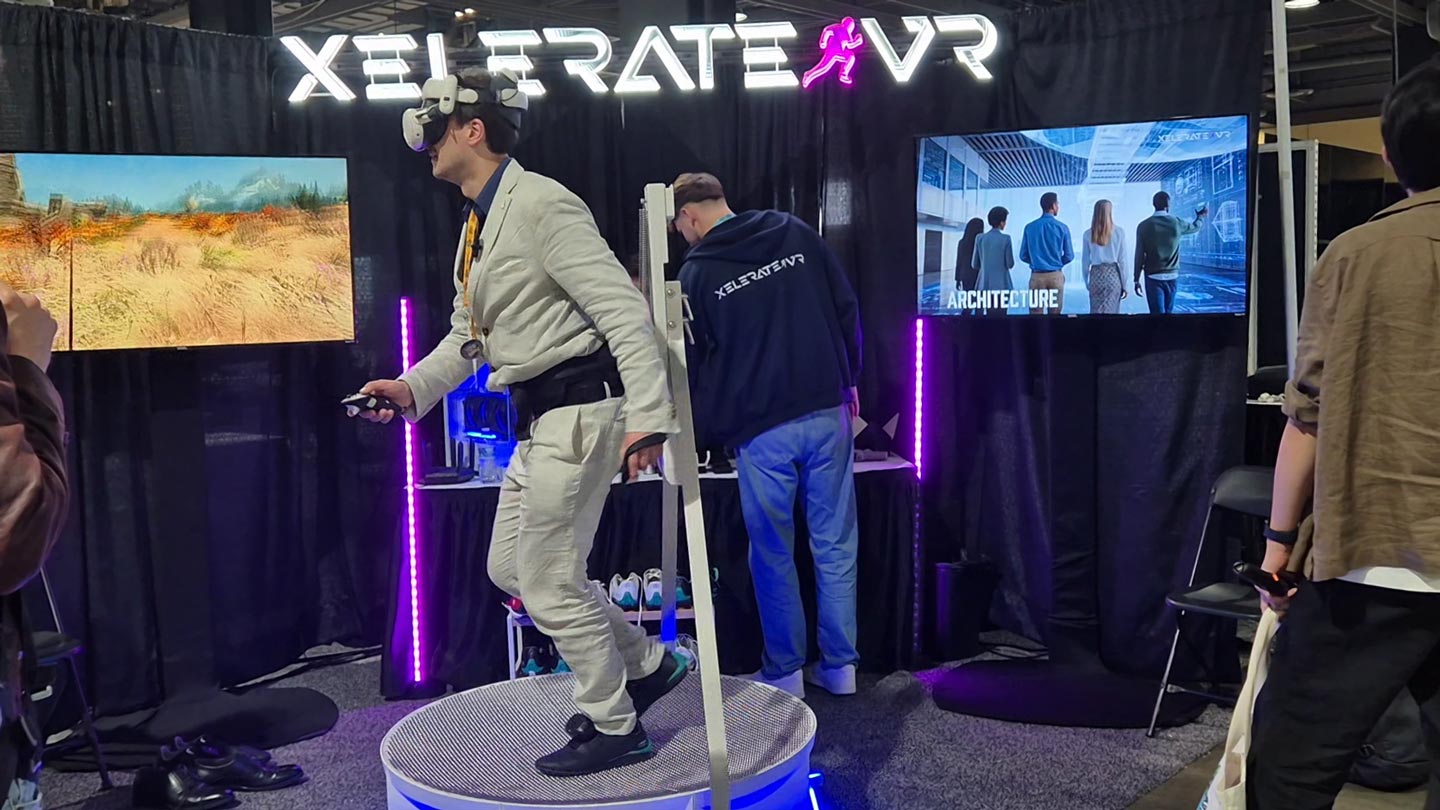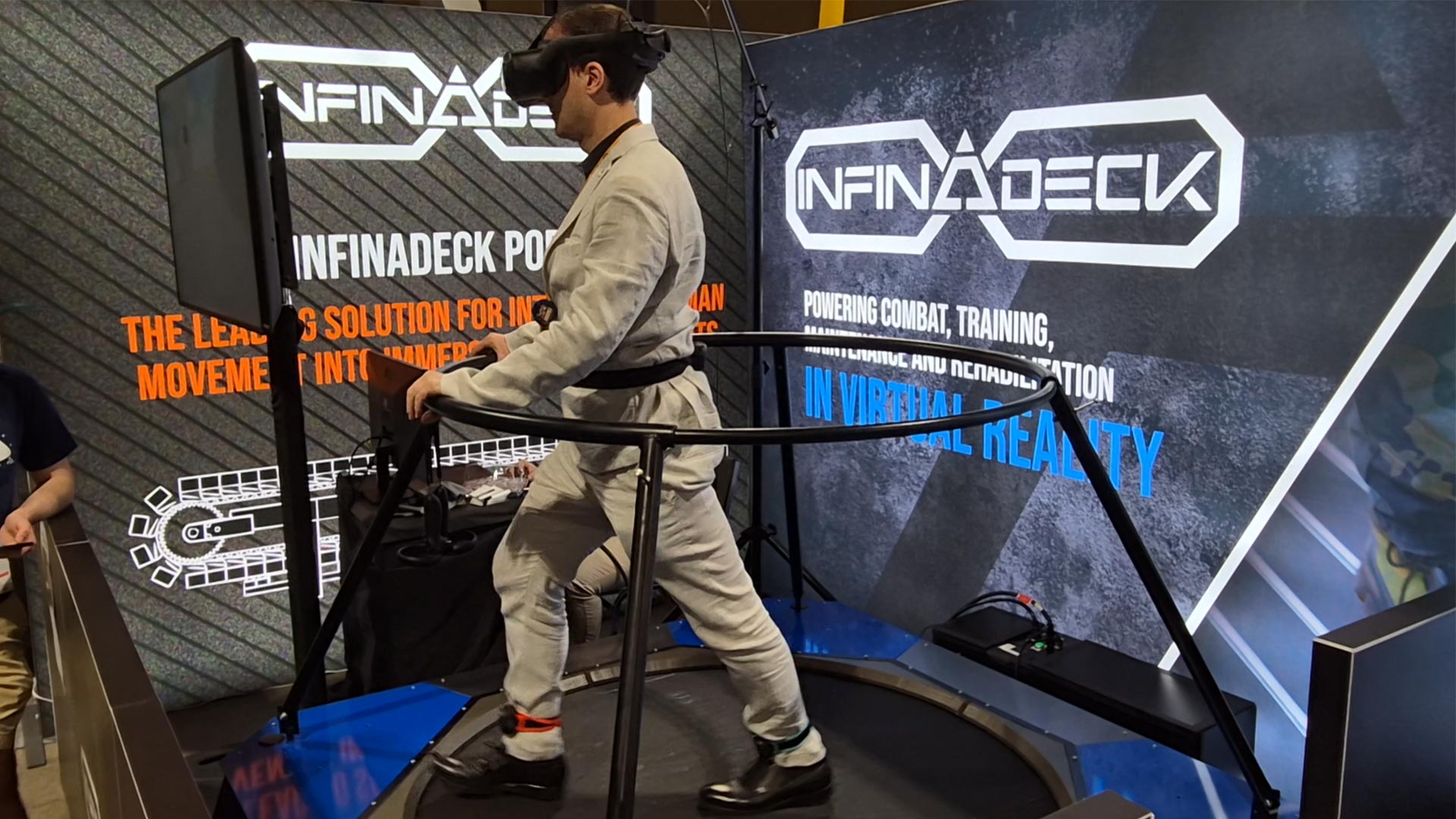An amazing day at HTC Vive, trying SteamVR multiroom, Vive Wireless Adapter and Vive Focus gesture tracking
Two days ago, I’ve been at HTC Vive Chinese headquarters in Beijing. It has been a really amazing day, where I have been able to try some amazing HTC tech demos (more on this later on! Don’t miss it!) and especially to talk with some special people. I’ve been able to speak with three companies incubated in the Vive-X Beijing and also to know various HTC Vive employees.
Before talking about technology, I really want to spend some kind words for the Vive people. Everyone has been super kind to me: I really want to thank them all… starting from Bruce, that has assisted me during the whole day (he’s the cool guy in the header photo), Sharon that has organized all the meetings, Teresa that helped me with the Visa and Roy that showcased me some cool demos. Then, of course, there is Mister President, that has made all of this possible… and that, since he knows that my Note 4 has stopped working, has also generously gifted me a cool HTC U12+ phone, so that I can try the phone integration with the Vive Focus! Unluckily Mister President couldn’t be there because from great powers come great responsibilities, so he had to be in Taipei and I couldn’t observe him in his natural habitat and that made me a little sad. 🙁

The atmosphere in the office was really positive, everyone was very passionate and kind… I was surprised to know that there is a very relaxed attitude even for what concerns the competition. One of the employees even admitted that at home he sometimes uses an Oculus Rift and the various startups in the Vive-X are free to use Windows Mixed Reality headsets. So, while there are HTC and Oculus fanboys that hate each other, it seems that HTC people have absolutely no hate for Oculus. Bruce has even said that he is happy that there is Oculus, because, without competition, everyone would be too lazy, there would be no willingness to push the boundaries further… a smart competitor like Oculus is optimal to make them all try to do their best every day. Kudos to them for such an attitude, I myself have to learn from it.
So, yesterday, I’ve spent my day with great people. But I think that you’re more interested to read about some great technology, so here you are my impressions for some tech demos that the Vive team has made me try. Before starting, I want to warn you that I’ve tried everything for something like 5 minutes, so these are some first impressions and can’t substitute an in-depth review that comes from days of extended usage (like the one I made for the Vive Focus).
Vive Wireless Adapter

The Vive Wireless Adapter is that official gadget developed by HTC that serves to make the Vive Wireless. It consists of these parts:
- A little horn that you put on your headset (the antenna), that transmits the rotational and positional data of the headset to the PC and receives the images rendered by the PC to be shown on the screen;
- The battery, that you can attach to your belt, that powers the antenna through a little cable. It is expected to let you play for around three hours;
- A Wi-Gig receiver/transmitter that you can put on the screen of your PC and that has to be attached to the PCIe WiGig card of your PC. This is what handles the transmission on the PC side.



My experience with the Wireless Adapter has been awesome. While wearing the headset, I haven’t felt the presence of a wireless device on it at all, it was as wearing a tethered Vive Pro. The battery in my pocket was super-light, I immediately forgot it… it was so different from the big dildo that I had to wear with the TPCast v1.

The quality of the image was damn crisp. Roy put me in a SteamVR Home environment with stunning graphics and I was just amazed. The resolution of the Vive Pro with the quality of the experience made me excited. I tried to rotate my head fast, I tried to walk, I tried to move fast… and everything worked like a charm. I’ve also tried to put my hands and controllers next to the antenna and I had no issues. I noticed no difference between a wired Vive Pro and the wireless Vive Pro. It was really an amazing experience.
https://gfycat.com/DigitalElementaryFox
Regarding the launch date, Roy told me that the official launch will happen “soon”.
SteamVR Multiroom setup
Some weeks ago, HTC published a video where its employees tried a new version of SteamVR beta that allows having a maximum of 16 Lighthouse v2 stations to create a multi-room setup. This means that for instance, you can track with SteamVR a whole house, provided that when you go from a room to another one, there is at least a Lighthouse station in the old room and one in the new room that track you simultaneously so that to let the transition happen.
https://twitter.com/AGraylin/status/1016992465742585857?ref_src=twsrc%5Etfw%7Ctwcamp%5Etweetembed%7Ctwterm%5E1016992465742585857&ref_url=https%3A%2F%2Fwww.engadget.com%2F2018%2F07%2F15%2Fhtc-hints-at-multi-room-steamvr%2F
Being in HTC offices, I really wanted to try it. Roy explained to me that the technology is still in development and that in the future it could also be able to offer even more. He then gave me some details on how to put the Lighthouse stations in each room so that to optimize performance and on how to configure the whole VR setup on SteamVR. It has been interesting discussing technical details with him.

In HTC setup, they used six lighthouse stations, that let me go out from the original room (the one where I tried the wireless adapter) and enter a corridor, that I could navigate back and forth. In VR I could see an environment made with Tilt Brush that highlighted where the walls were, so to ensure safety. There was an exact match between the real and the virtual world.

Trying it, I was like “woooooaah”: I was a bit scared of navigating between different rooms guided only by some lines drawn in Tilt Brush, but everything worked perfectly. I was even able to find a sofa (that was highlighted in the virtual world) and sit on it, virtually and actually. The Chaperone was configured correctly, so it followed the shape of the multi-room environment, too. The thing that surprised me the most was that I really noticed NO SEAMS. The tracking worked awesomely in all rooms, even in the transition points (that I haven’t noticed in VR). Awesome stuff.
https://gfycat.com/OrangeQuaintGaur
I think that this can be really interesting for arcades or for training experiences, for instance. I also started speculating with my mind how this can be useful not only to track Vive headsets, but also every headset onto which have been installed SteamVR Tracking v2 sensors (the ones of Triad Semiconductor), or Vive Trackers… so even a Samsung Gear VR with a Vive Tracker on could be tracked across a whole house. An affordable technology with lots of possible future applications.
Vive Focus 6 DOF gesture tracking
Soon, on the Vive Focus, you will be allowed to use your hands to interact with the virtual environment, without using your controller thanks to HTC Vive gesture tracking. After having seen the demo of such a system in the videos of the VEC Conference in Shenzhen, I really wanted to try it and HTC people have kindly satisfied my request.
The main critic of people watching the above video was that the lag seems damn high, but it wasn’t clear if it was because of the screen mirroring or because of actual performance. Even the accuracy was not clear from the video.
Well, after having tried it I can say that the system is promising, but it still needs some fixes: in fact, HTC people told me that it is still a work in progress and not a finished product.
It can tracks five gestures: fist, pointing, ok, thumbs up, hand open. The gesture detection works on both hands simultaneously and it performed well: it always detected correctly my gestures. It also detected the 3D position in space of my hands. The FOV of the detection is around 70°, meaning that basically your hands gets detected as soon as its virtual counterpart is still in the FOV of the headset… so the field of view is enough. Regarding the reactiveness, there was a delay of around half a second between my movements and the response of the system. So, not terrible as in the videos, but still not perfect for VR. Furthermore, the detection was a bit intermittent, meaning that while moving my hands, sometimes the tracking got lost for some little time and then immediately recovered.

People explained to me that the problems that I have experienced are due to the little computational power of a standalone headset (if compared to a PC), that require lots of optimization and approximation efforts to make things to work. Anyway, they are confident that they will be able to make it works smoothly soon.
I think that at the current stage, the technology is satisfying to make an app reactive to discrete gestures (e.g. an app where you can make an ok sign to your virtual tutor to tell him to go on), but still not optimal to make an app where you need continuous gesture tracking (e.g. where you can zoom objects by moving the hands closer and further), because you may have glitches.
I can’t wait it will be finalized.
6 DOF Controller
They couldn’t make me try the 6 DOF controller emulation, but they told me that it is based on the same technology of the gestures tracking, so I can expect similar performances. This means that I can imagine that it is on the right track, but still needs refinements to work perfectly.
I really can’t wait for all these technologies to be distributed in the market, because they can really make VR perform some steps forward. And I really can’t wait to return in the future to HTC offices to try other demos and have chats with interesting people. In the meanwhile, HTC will be at the upcoming ChinaJoy exhibition in Shanghai and who knows what other cool stuff they will showcase! I’ll keep an eye on that and I will let you know… are they going to reveal some new detail on these technologies?
If you have questions about what I’ve tried, just ask me in the comment section. And don’t be shy, subscribe to my newsletter, too! 😉
Disclaimer: this blog contains advertisement and affiliate links to sustain itself. If you click on an affiliate link, I'll be very happy because I'll earn a small commission on your purchase. You can find my boring full disclosure here.




Wow you have tried a lot of impressive stuff, awesome! HTC labs seems definitely cool! By chance did you ask for any news on the price of the Vive Wireless Adapter? I’m quite interested but it will depend a lot on the retail price.
What a trip you have done, Tony! Hope you have enjoyed your vacations despite being working a lot to keep us updated with the VR trends in China 🙂
They gave me some hints on the release date (before the end of summer), but not on the price. In any case, I wouldn’t be able to tell you, so it is the same as not asking :D.
I really hope you all have enjoyed my posts on China… it has been really tiresome working while travelling, so I’m happy it was worth it. I need a vacation to rest after the vacation :D. Anyway, I have still a lot of interviews to publish… like the one with 7invensun (I tried eye tracking on HoloLens!!!)… so stay tuned!
It’s been great reading your experiences of China. We have such a Western bias to our VR news reporting so it’s great you have seen another continent. What about VR in Japan next time you travel?
I learnt that the only way to know the truth about a country is going there and seeing things with own eyes.
Regarding Japan… well, I would really love going there. It’s another dream of mine. So, maybe…
Sure thing Tony! We pretty much enjoyed all the posts… but hope you have had at least some free time to enjoy your vacations at its fullest. Otherwise, you should take vacations on your vacations. Japan is a nice choice as R FC mentioned… keep us updated haha 😉
Thanks. Well, how about Uruguay? How is VR there? 😉
Haha meh, if you come here someday come for its awesome Atlantic coasts and tasty meat, not for VR. I guess I could count the high-end VR systems in the whole country with my fingers only (and I’m not joking!). You won’t even be able to try a Potatoe series headset in an arcade, so, definitely you shouldn’t come to Uruguay with some VR hype because you will get nothing haha. But we are just a bit more than 3 million people in the whole country, so I guess it’s expected to be that way, the local market is very small…
Well, we are like 50million and the VR ecosystem is growing, but we are far behind the big countries. Anyway, I really hope to be able to visit Uruguay one day… it seems an interesting place to me. And then Spanish is far easier than Chinese 😀
Hope so, Tony, it would be great! You already have accommodation here 😉 And yeah, I guess you would even be able to communicate directly in Italian
Our languages are very similar and I also studied Spanish one year at the University… so I guess the language won’t be a problem. Regarding Uruguayan people biting me, instead…
Great article as always 👍
Can I ask? Where is HTC R&D? Is it China or Taiwan? Any ideas who actually designed Vive pro and Vive Focus?
Thanks!
I have no idea on who is in charge of R&D. I guess that the main office is in Taiwan… The one where I have been in is too little to host all the R&D and design of a new headset. I think that in Beijing they work in experimenting with headsets, techniques, usability, etc… and handling relations with Mainland China. So, they make research, but I guess that the main department is still in Taiwan.
Furthermore the Beijing office is attached to a Vive X incubator office, so they help startups in having success.
That makes sense. Here’s an interesting idea…could a Vive Focus be hacked to run Daydream? The Mirage Solo is ok, but lacks the build quality and finesse of Focus, and physical IPD adjustment stops 🤪
Ahahahahah IMHO it would require really too much knowledge and willpower to do such a hack. And I’m afraid to ask HTC because probably they would kill me 😀
an interesting challenge for a talented hacker no doubt! it should be technically possible because it was slated to run Google Worldsense before they pivoted away?
i understand your concern about HTC, they have people everywhere 😎
Ahahaha I have a Focus and a smartphone gifted by them, for sure they are full of spying services that listen to everything I say! 😀 😀
My guess is that since the hardware should have worked with Google software, in the beginning, it is compatible. So I think that someway it is possible to hack a Focus to run a Daydream OS so to have the great comfort of the Focus with the amazing tracking of the Solo. The problem is how to do that… we would need to root the Focus and install a Daydream ROM. And I don’t know how to do that…
i don’t think anyone knows how to do that, including Google…their AI is keeping all its secrets close to itself…the machines are surely taking over!
seriously though, it would be a cool hack, especially a dual boot version with both os 👍
I think we’ll start seeing things like that when VR headsets will be more widespread… as it has happened for PCs and smartphones